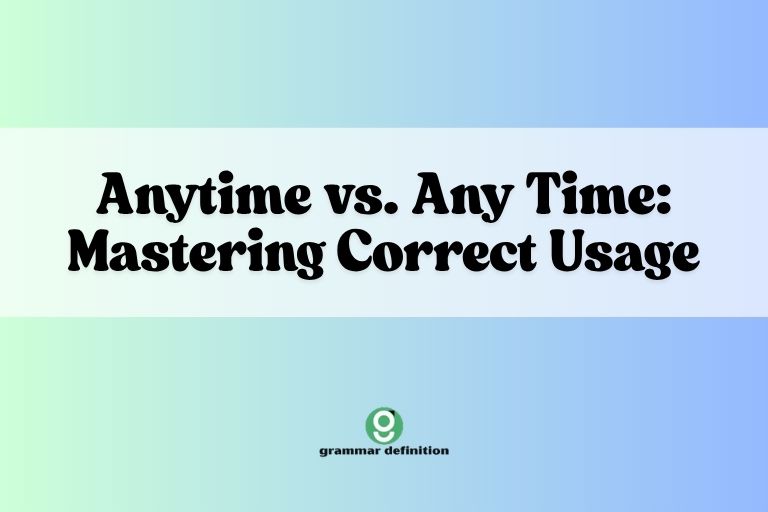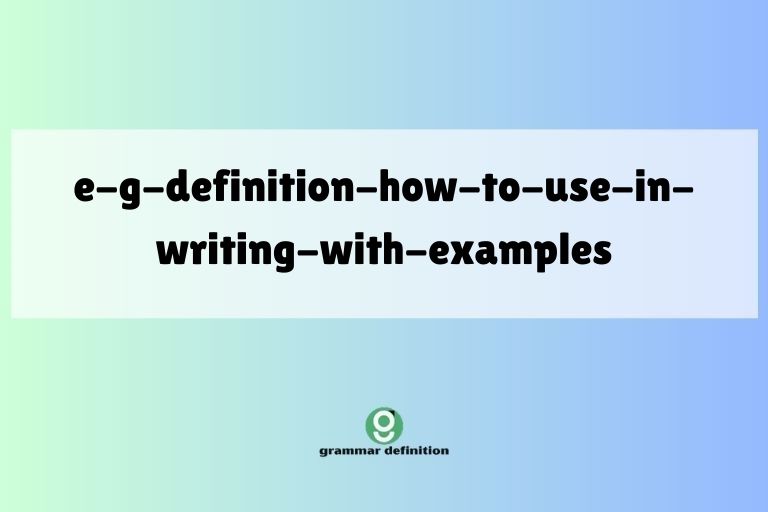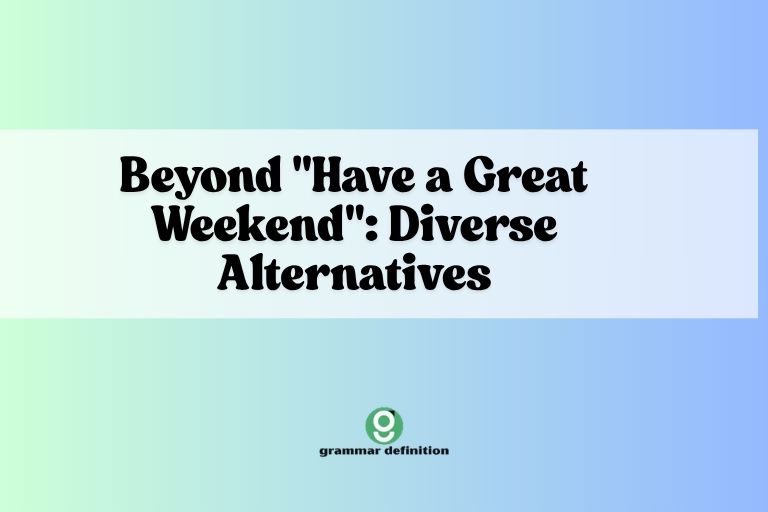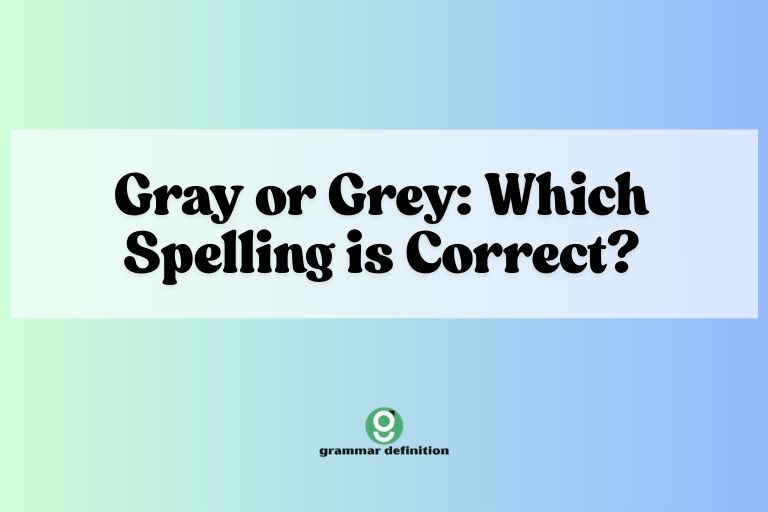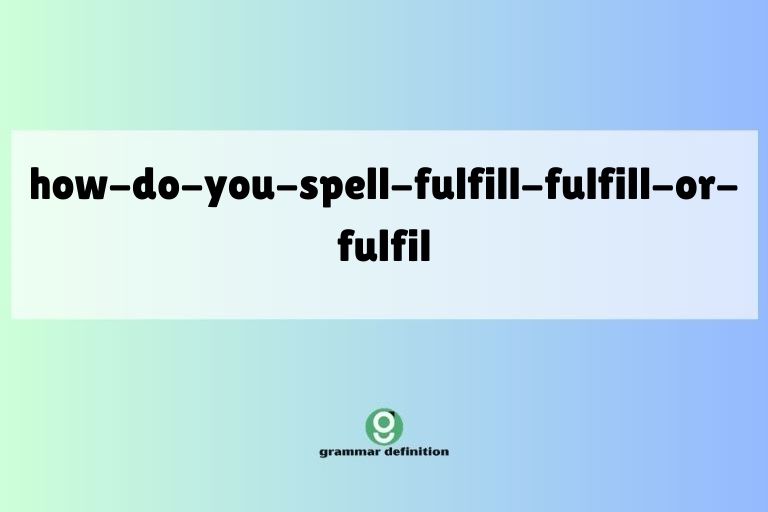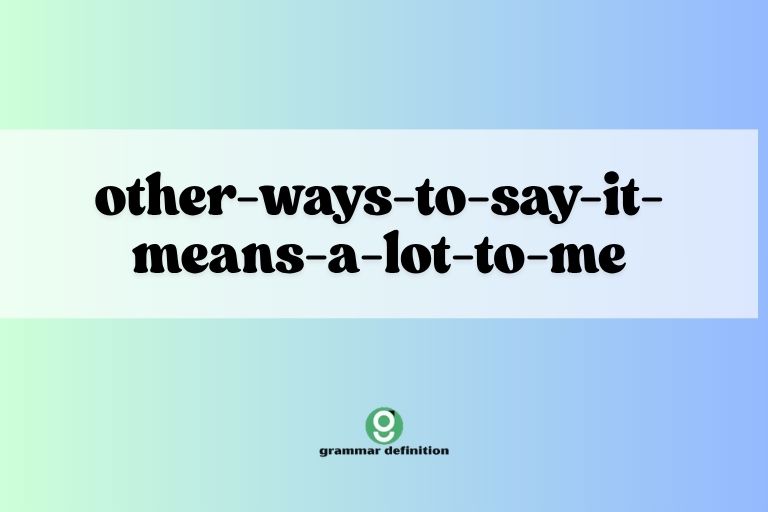Mastering Conjunctions: Definition, Usage, and Examples
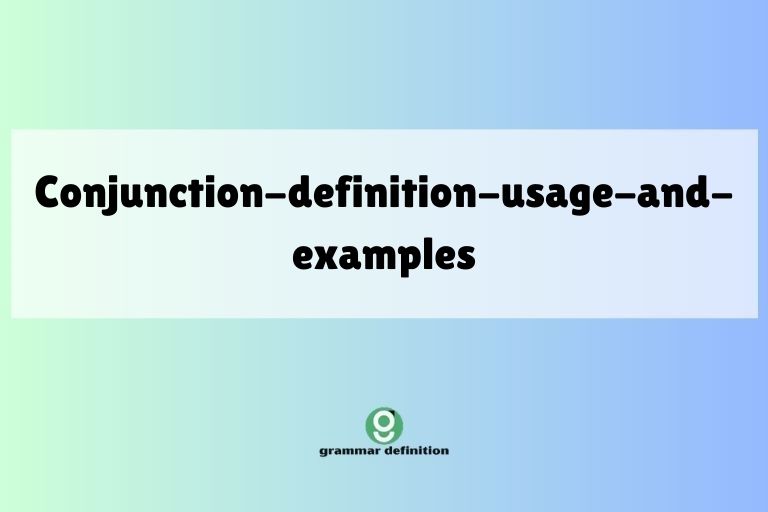
Conjunctions are the unsung heroes of English grammar, seamlessly connecting words, phrases, and clauses to form complex and coherent sentences. Understanding how to use conjunctions effectively is crucial for clear and fluent communication, both in writing and speaking.
This article provides a comprehensive guide to conjunctions, covering their definition, types, usage rules, common mistakes, and advanced topics. Whether you’re a beginner or an advanced learner, this guide will help you master the art of using conjunctions to enhance your English skills.
Table of Contents
- Definition of Conjunctions
- Structural Breakdown
- Types of Conjunctions
- Examples of Conjunctions
- Usage Rules
- Common Mistakes
- Practice Exercises
- Advanced Topics
- FAQ
- Conclusion
Definition of Conjunctions
A conjunction is a word that connects words, phrases, or clauses. Conjunctions serve as essential tools for building complex sentences and establishing relationships between different parts of a sentence.
They provide coherence and flow, making writing and speech more understandable and engaging.
Conjunctions can be classified based on their function and the types of elements they connect. The main categories include coordinating conjunctions, subordinating conjunctions, correlative conjunctions, and conjunctive adverbs.
Each type has specific rules governing its usage, which we will explore in detail.
Structural Breakdown
Conjunctions operate at various levels of sentence structure. They can link individual words, such as nouns or verbs, phrases, or entire clauses, which contain a subject and a verb.
The type of elements a conjunction connects determines the overall structure of the sentence.
For example, coordinating conjunctions join elements of equal grammatical rank, such as two independent clauses. Subordinating conjunctions, on the other hand, introduce dependent clauses that cannot stand alone as sentences.
Understanding these structural differences is key to using conjunctions correctly.
Types of Conjunctions
Coordinating Conjunctions
Coordinating conjunctions connect words, phrases, or independent clauses of equal grammatical rank. There are seven coordinating conjunctions, often remembered by the acronym FANBOYS: For, And, Nor, But, Or, Yet, So. They are used to show addition, contrast, choice, or result.
For indicates a reason or cause. And adds information. Nor presents a negative alternative. But shows contrast. Or offers a choice or alternative. Yet indicates a contrast similar to ‘but’. So indicates a result or consequence.
Subordinating Conjunctions
Subordinating conjunctions introduce dependent clauses, which cannot stand alone as complete sentences. They connect a dependent clause to an independent clause, creating a complex sentence. Common subordinating conjunctions include because, although, if, since, when, while, after, before, until, unless, as, that, so that, and where.
Subordinating conjunctions establish a relationship between the dependent and independent clauses, such as cause and effect, time, condition, or contrast. The dependent clause can come before or after the independent clause, but the meaning remains the same.
However, when the dependent clause comes first, it is usually followed by a comma.
Correlative Conjunctions
Correlative conjunctions are pairs of conjunctions that work together to connect elements of equal grammatical rank. These come in pairs and must be used together. Common correlative conjunctions include both…and, either…or, neither…nor, not only…but also, whether…or.
Correlative conjunctions add emphasis and clarity to sentences. They highlight the relationship between the connected elements, making the sentence more balanced and structured.
The elements connected by correlative conjunctions should be grammatically parallel.
Conjunctive Adverbs
Conjunctive adverbs act as conjunctions by connecting independent clauses. They also modify the clause they introduce, providing additional information or showing a relationship between the clauses. Common conjunctive adverbs include however, therefore, moreover, furthermore, nevertheless, consequently, thus, accordingly, indeed, and otherwise.
Conjunctive adverbs are typically preceded by a semicolon when connecting two independent clauses and followed by a comma. They can also be used within a single clause, usually set off by commas, to add emphasis or transition between ideas.
Examples of Conjunctions
The following tables provide examples of each type of conjunction in various sentences. These examples illustrate how conjunctions connect words, phrases, and clauses to create coherent and meaningful sentences.
Examples of Coordinating Conjunctions
The following table contains examples of sentences using coordinating conjunctions. Notice how each conjunction connects elements of equal grammatical rank, such as two words, two phrases, or two independent clauses.
| Coordinating Conjunction | Example Sentence |
|---|---|
| For | He studied hard, for he wanted to pass the exam. |
| And | She likes to read books and watch movies. |
| Nor | He doesn’t like coffee, nor does he like tea. |
| But | I wanted to go to the party, but I was too tired. |
| Or | Would you like coffee, or would you prefer tea? |
| Yet | It was raining, yet they decided to go for a walk. |
| So | He was hungry, so he made a sandwich. |
| For | The ground was wet, for it had been raining. |
| And | The cat sat on the mat, and the dog lay on the floor. |
| Nor | I don’t like to swim, nor do I enjoy surfing. |
| But | She is intelligent, but she lacks common sense. |
| Or | You can stay here, or you can come with me. |
| Yet | He apologized, yet she remained angry. |
| So | It was late, so we went home. |
| For | He brought an umbrella, for it looked like rain. |
| And | The sun was shining, and the birds were singing. |
| Nor | She doesn’t speak Spanish, nor does she speak Italian. |
| But | He is rich, but he is not happy. |
| Or | Do you want to eat now, or do you want to wait? |
| Yet | She studied hard, yet she failed the test. |
| So | He was tired, so he went to bed early. |
| For | She wore a coat, for it was cold outside. |
| And | The children laughed, and they played games. |
| Nor | He did not call, nor did he write. |
Examples of Subordinating Conjunctions
The following table contains examples of sentences using subordinating conjunctions. Notice how each conjunction introduces a dependent clause, which is connected to an independent clause to form a complex sentence.
| Subordinating Conjunction | Example Sentence |
|---|---|
| Because | I am happy because you are here. |
| Although | Although it was raining, we went for a walk. |
| If | If it rains, we will stay inside. |
| Since | Since you are ready, we can leave now. |
| When | When I finish work, I will call you. |
| While | While I was waiting, I read a book. |
| After | After the movie, we went for ice cream. |
| Before | Before you leave, please turn off the lights. |
| Until | I will wait until you arrive. |
| Unless | Unless you hurry, you will be late. |
| As | As I was walking, I saw a friend. |
| That | He said that he would come. |
| So that | I study hard so that I can pass the exam. |
| Where | I know where you live. |
| Because | She stayed home because she was sick. |
| Although | Although he tried hard, he didn’t succeed. |
| If | If you need help, let me know. |
| Since | Since it’s your birthday, we’ll go out to dinner. |
| When | When the bell rings, we can go home. |
| While | While she was cooking, he was cleaning. |
| After | After we finish the work, we can relax. |
| Before | Before you go to sleep, brush your teeth. |
| Until | I will not leave until I finish this. |
| Unless | Unless you practice, you won’t improve. |
Examples of Correlative Conjunctions
The following table contains examples of sentences using correlative conjunctions. Notice how each pair of conjunctions works together to connect elements of equal grammatical rank, adding emphasis and clarity to the sentence.
| Correlative Conjunction | Example Sentence |
|---|---|
| Both…and | Both my brother and my sister are doctors. |
| Either…or | You can have either coffee or tea. |
| Neither…nor | He is neither rich nor famous. |
| Not only…but also | She is not only intelligent but also kind. |
| Whether…or | I don’t know whether he will come or not. |
| Both…and | Both the book and the movie were excellent. |
| Either…or | You can either study now or fail the test. |
| Neither…nor | He speaks neither English nor French. |
| Not only…but also | She is not only a talented singer but also a great dancer. |
| Whether…or | I am unsure whether to stay or to leave. |
| Both…and | Both the cat and the dog are sleeping. |
| Either…or | You can choose either the blue shirt or the red one. |
| Neither…nor | He likes neither apples nor oranges. |
| Not only…but also | She is not only beautiful but also smart. |
| Whether…or | I don’t know whether it will rain or shine. |
| Both…and | Both the teacher and the students enjoyed the lesson. |
| Either…or | You can either eat your dinner or go to bed hungry. |
| Neither…nor | He is neither a good cook nor a good cleaner. |
| Not only…but also | She is not only a doctor but also a writer. |
| Whether…or | I can’t decide whether to buy a car or a motorcycle. |
Examples of Conjunctive Adverbs
The following table contains examples of sentences using conjunctive adverbs. Notice how each adverb connects independent clauses, providing additional information or showing a relationship between the clauses.
Remember to use a semicolon before the conjunctive adverb and a comma after it when connecting independent clauses.
| Conjunctive Adverb | Example Sentence |
|---|---|
| However | He studied hard; however, he failed the test. |
| Therefore | He was late; therefore, he missed the meeting. |
| Moreover | She is intelligent; moreover, she is hardworking. |
| Furthermore | The project is interesting; furthermore, it is challenging. |
| Nevertheless | It was raining; nevertheless, they went for a walk. |
| Consequently | He didn’t study; consequently, he failed the exam. |
| Thus | The experiment was successful; thus, we published the results. |
| Accordingly | He followed the instructions; accordingly, he succeeded. |
| Indeed | The task was difficult; indeed, it took several hours. |
| Otherwise | You must hurry; otherwise, you will be late. |
| However | She wanted to go; however, she had to work. |
| Therefore | The roads were icy; therefore, we drove slowly. |
| Moreover | The city is beautiful; moreover, it is safe. |
| Furthermore | The food was delicious; furthermore, it was affordable. |
| Nevertheless | She was tired; nevertheless, she continued working. |
| Consequently | He broke the law; consequently, he was arrested. |
| Thus | The data was analyzed; thus, we reached a conclusion. |
| Accordingly | He prepared well; accordingly, he performed excellently. |
| Indeed | The weather is terrible; indeed, it’s the worst I’ve seen. |
| Otherwise | You need to pay attention; otherwise, you’ll miss important details. |
Usage Rules
Using conjunctions correctly involves understanding their specific functions and adhering to grammatical rules. Here are some key usage rules to keep in mind:
- Coordinating Conjunctions: Use a comma before a coordinating conjunction when it connects two independent clauses.
- Subordinating Conjunctions: When the dependent clause comes before the independent clause, use a comma to separate them.
- Correlative Conjunctions: Ensure that the elements connected by correlative conjunctions are grammatically parallel.
- Conjunctive Adverbs: Use a semicolon before a conjunctive adverb and a comma after it when connecting two independent clauses.
It’s also important to choose the appropriate conjunction to convey the intended relationship between the connected elements. Using the wrong conjunction can change the meaning of the sentence and lead to confusion.
Common Mistakes
Several common mistakes can occur when using conjunctions. Being aware of these errors can help you avoid them and improve your writing.
| Incorrect | Correct | Explanation |
|---|---|---|
| I like coffee, and tea. | I like coffee and tea. | Do not use a comma before ‘and’ when connecting two words. |
| Because I was tired, I went to bed. | Because I was tired, I went to bed. | The first clause is dependant and comma is correctly used. |
| Although, it was raining, we went for a walk. | Although it was raining, we went for a walk. | Do not add a comma after “Although”. |
| He is both intelligent, and kind. | He is both intelligent and kind. | Do not add a comma before “and” after “both”. |
| He was late, therefore he missed the meeting. | He was late; therefore, he missed the meeting. | Use a semicolon before and a comma after a conjunctive adverb connecting independent clauses. |
| I like to read and to write. | I like to read and write. | Avoid unnecessary repetition of “to” with coordinating conjunctions when the infinitive form is already established. |
| She is not only beautiful, but smart. | She is not only beautiful but also smart. | The correlative conjunction “not only” must be paired with “but also.” |
| Because it rained. We stayed inside. | Because it rained, we stayed inside. | The phrase “Because it rained” is a dependent clause and must be connected to an independent clause. |
| He likes neither coffee or tea. | He likes neither coffee nor tea. | The correlative conjunction “neither” must be paired with “nor.” |
| I went to the store but I forgot my wallet. | I went to the store, but I forgot my wallet. | A comma is needed before “but” when connecting two independent clauses. |
Practice Exercises
Test your understanding of conjunctions with these practice exercises. Choose the correct conjunction to complete each sentence.
Exercise 1: Coordinating Conjunctions
Choose the correct coordinating conjunction (for, and, nor, but, or, yet, so) to complete each sentence.
| Question | Answer |
|---|---|
| 1. He was tired, ______ he went to bed early. | so |
| 2. She likes to sing ______ dance. | and |
| 3. I don’t like coffee, ______ do I like tea. | nor |
| 4. He wanted to go, ______ he was too busy. | but |
| 5. Would you like tea, ______ coffee? | or |
| 6. It was raining, ______ they went for a walk. | yet |
| 7. She studied hard, ______ she wanted to pass the exam. | for |
| 8. The sun was shining, ______ the birds were singing. | and |
| 9. He is not rich, ______ is he famous. | nor |
| 10. I was hungry, ______ I made a sandwich. | so |
Exercise 2: Subordinating Conjunctions
Choose the correct subordinating conjunction (because, although, if, since, when, while, after, before, until, unless, as) to complete each sentence.
| Question | Answer |
|---|---|
| 1. I am happy ______ you are here. | because |
| 2. ______ it was raining, we went for a walk. | Although |
| 3. ______ it rains, we will stay inside. | If |
| 4. ______ you are ready, we can leave now. | Since |
| 5. ______ I finish work, I will call you. | When |
| 6. ______ I was waiting, I read a book. | While |
| 7. ______ the movie, we went for ice cream. | After |
| 8. ______ you leave, please turn off the lights. | Before |
| 9. I will wait ______ you arrive. | until |
| 10. ______ you hurry, you will be late. | Unless |
Exercise 3: Correlative Conjunctions
Complete each sentence using the correct correlative conjunctions (both…and, either…or, neither…nor, not only…but also, whether…or).
| Question | Answer |
|---|---|
| 1. ______ my brother ______ my sister are doctors. | Both…and |
| 2. You can have ______ coffee ______ tea. | either…or |
| 3. He is ______ rich ______ famous. | neither…nor |
| 4. She is ______ intelligent ______ kind. | not only…but also |
| 5. I don’t know ______ he will come ______ not. | whether…or |
| 6. ______ the book ______ the movie were excellent. | Both…and |
| 7. You can ______ study now ______ fail the test. | either…or |
| 8. He speaks ______ English ______ French. | neither…nor |
| 9. She is ______ a talented singer ______ a great dancer. | not only…but also |
| 10. I am unsure ______ to stay ______ to leave. | whether…or |
Advanced Topics
For advanced learners, understanding the nuances of conjunction usage can further enhance their writing and speaking skills. This includes recognizing subtle differences in meaning between similar conjunctions and using conjunctions strategically to create specific effects.
For example, the choice between ‘but’ and ‘yet’ can subtly alter the emphasis of a sentence. ‘But’ is a more direct contrast, while ‘yet’ implies a sense of surprise or unexpectedness.
Similarly, understanding how to use conjunctive adverbs effectively can add sophistication to your writing.
Another advanced topic involves understanding how conjunctions interact with other grammatical elements, such as verb tenses and sentence structure. For instance, certain subordinating conjunctions require specific verb tenses in the dependent clause.
Mastering these advanced topics will enable you to use conjunctions with precision and artistry.
FAQ
Here are some frequently asked questions about conjunctions:
- What is the difference between a coordinating conjunction and a subordinating conjunction?
Coordinating conjunctions connect elements of equal grammatical rank, while subordinating conjunctions introduce dependent clauses that cannot stand alone as sentences. - How do I know when to use a comma before a coordinating conjunction?
Use a comma before a coordinating conjunction when it connects two independent clauses. - What are some common subordinating conjunctions?
Common subordinating conjunctions include because, although, if, since, when, while, after, before, until, unless, as, that, so that, and where. - What are correlative conjunctions, and how do they work?
Correlative conjunctions are pairs of conjunctions that work together to connect elements of equal grammatical rank, such as both…and, either…or, neither…nor, not only…but also, whether…or. - How are conjunctive adverbs used?
Conjunctive adverbs connect independent clauses and modify the clause they introduce. They are typically preceded by a semicolon and followed by a comma when connecting two independent clauses. - Can I start a sentence with a conjunction?
While it was traditionally discouraged, starting a sentence with a coordinating conjunction is now widely accepted in modern writing, particularly for emphasis or stylistic effect. However, it should be used sparingly. - What is the difference between ‘although’ and ‘though’?
‘Although’ and ‘though’ are both subordinating conjunctions that introduce a clause expressing contrast. ‘Though’ is generally considered more informal than ‘although’. They are often interchangeable, but ‘though’ can also function as an adverb at the end of a sentence. - What is the role of a conjunction in a complex sentence?
In a complex sentence, a conjunction, typically a subordinating conjunction, connects an independent clause with one or more dependent clauses, establishing the relationship between the clauses and creating a more detailed and nuanced meaning.
Conclusion
Conjunctions are vital components of English grammar, enabling us to construct complex and meaningful sentences. By understanding the different types of conjunctions and their usage rules, you can significantly improve your writing and speaking skills.
Remember to practice using conjunctions in various contexts to master their nuances and avoid common mistakes.
This comprehensive guide has covered the definition, types, usage rules, common mistakes, and advanced topics related to conjunctions. Continue to explore and experiment with conjunctions to enhance your ability to express yourself clearly and effectively.
With practice and attention to detail, you can master the art of using conjunctions and elevate your English skills to the next level. Remember, the key is consistent practice and application of these principles in your everyday communication.

